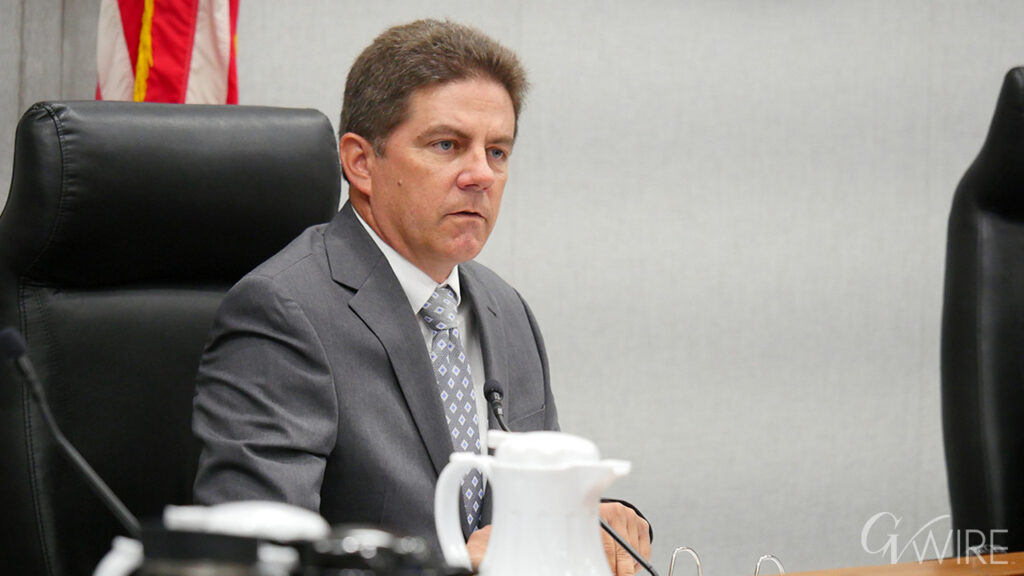Share
Scott Wiener must be a glutton for punishment.
Just last week, the Democratic state senator from San Francisco failed, after repeated attempts and many revisions, to win Senate approval of his ambitious bill to force local communities to accept more multi-family housing.

Dan Walters
Opinion
Wiener unveiled his bill five days after Gov. Gavin Newsom again threatened to seize the nation’s largest investor-owned utility if its plan to emerge from bankruptcy doesn’t meet his criteria.
Newsom, speaking to a Public Policy Institute of California forum, said he wanted “a completely transformed company” that’s more consumer- and safety-oriented.
“There’s going to be a new company, or the state of California takes it over,” Newsom warned, adding, “If PG&E can’t do it, we’ll do it for them.”
PG&E Agreed on a $13.5 Billion Settlement
Two days later, PG&E filed a revised plan to emerge from the bankruptcy it declared a year ago in response to billions of dollars in potential claims from wildfire victims, saying it “has taken to heart the governor’s concerns” and “is open to further discussions with the governor’s office and other stakeholders.”
“Under our plan, the company will emerge from Chapter 11 as a reimagined utility with an enhanced safety structure, improved operations, and a board and management team focused on providing the safe, reliable, and clean energy our customers expect and deserve,” PG&E CEO Bill Johnson said in a statement.
Previously, PG&E had announced that it reached agreement with wildfire victims on a $13.5 billion settlement, and competing factions of bondholders and major stockholders were also supporting its restructuring plan — but Newsom continued to criticize PG&E’s management and demand more changes.
Technically, the governor’s approval may not be needed for the federal bankruptcy court to approve the company’s plan, but PG&E’s access to a $21 billion special insurance pool to cover wildfire claims, is dependent on a satisfactory emergence from bankruptcy, thus giving Newsom and the state Public Utilities Commission leverage.
The revised plan submitted last Friday only partially addresses Newsom’s demands, leaving the threat of a state takeover, which Wiener’s bill would authorize, still on the table.
Would the Legislature Sanction a Takeover?
It’s a political, legal and financial poker game that hinges on whether state seizure is a viable alternative or just a bluff.
At the very least, it would be costly. PG&E’s stock surged after Friday’s revised bankruptcy filing. Last year, it dropped to $3.55 a share but has since climbed to more than $17, giving it a market capitalization of about $9 billion, but an enterprise value, calculated by Yahoo Finance, of more than $32 billion, which is probably closer to what the state would have to pay.
Would the Legislature sanction a seizure? And could a state-owned utility assemble tens of billions of dollars to pay off stockholders and wildfire victims, service PG&E’s $25 billion in debts, invest additional billions in fire safety and still avoid jacking up its consumer power rates, which are already among the nation’s highest?
Perhaps, but the more likely outcome is a deal under which PG&E makes a few more concessions to Newsom — particularly ones that are cosmetic, such as shaking up the corporate board — and he claims a victory.
CalMatters is a public interest journalism venture committed to explaining how California’s state Capitol works and why it matters. For more stories by Dan Walters, go to calmatters.org/commentary.
[activecampaign form=31]
Categories

Marvel Rivals Down for Some Users, Downdetector Shows

Casanova Is a Lover, True. But He’s Also Loyal and Calm

















